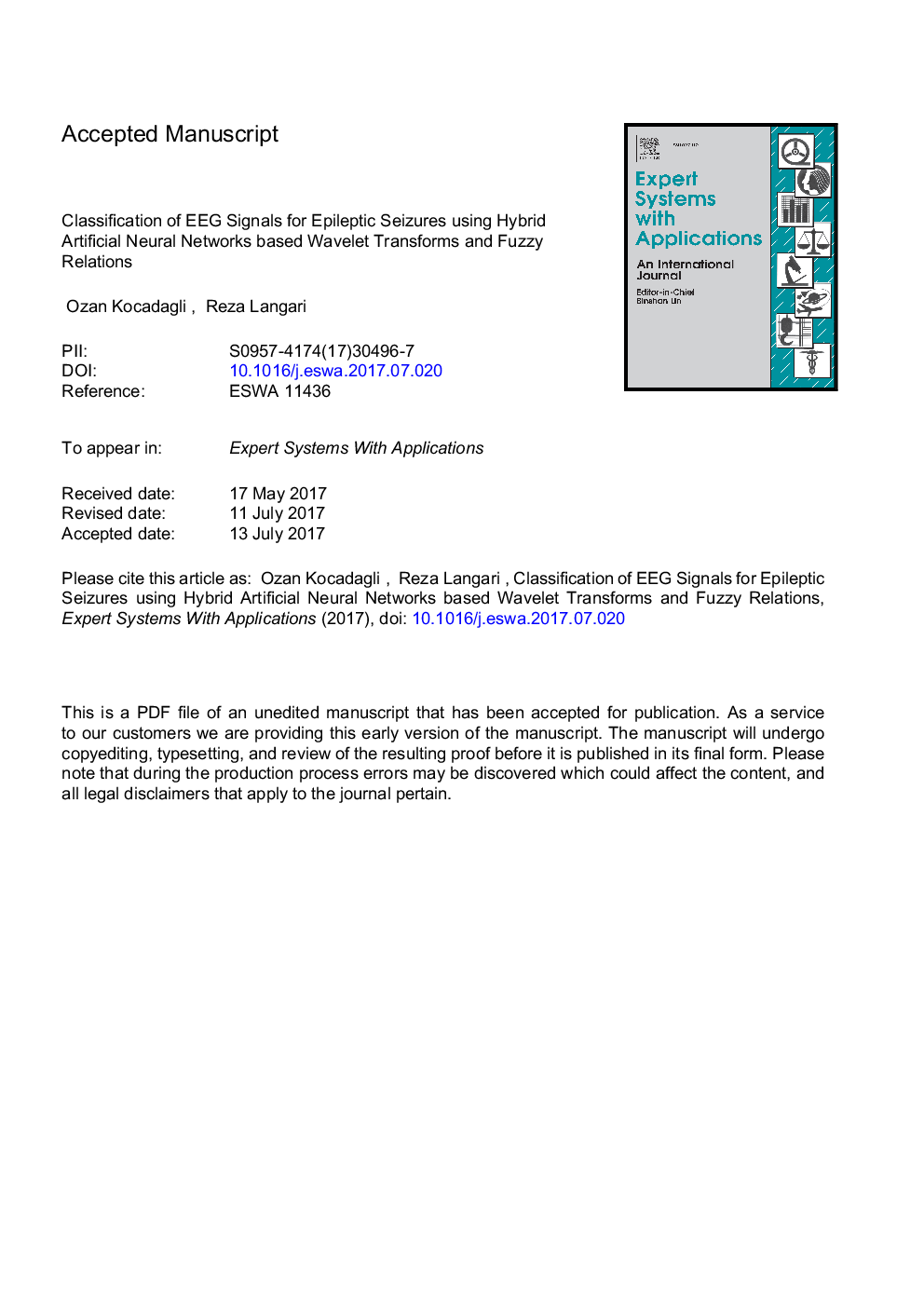| Article ID | Journal | Published Year | Pages | File Type |
|---|---|---|---|---|
| 4943300 | Expert Systems with Applications | 2017 | 31 Pages |
Abstract
Epilepsy is one of the most common central nervous system disorders. Epileptic people suffer from recurrent seizures depending on many trigger factors such as genetic, physiologic, brain damage, etc. Epileptic seizures occur at unpredictable times and mostly without warning. During seizures, epileptic people have distraction or involuntary spasms that might even result in serious physical injuries or death. Therefore, the detection of epilepsy still challenges the neurologists in terms of prediction of seizure times and classifying the brain signals received from different zones of brain. This study presents an efficient procedure that provides an accurate classification of Electroencephalogram (EEG) signals for early detection of epileptic seizures. Essentially, this procedure hybridizes many tools such as artificial neural networks (ANNs), gradient based algorithms, genetic algorithms (GAs), feature extraction with discrete wavelet transforms (DWT) and fuzzy relations for reducing dimensionality of features. In analysis, ANNs are trained by the gradient based algorithms and GAs considering early stopping, cross-validation and information criteria. In order to ensure an accurate classification performance, the automated multi-resolution signal processing technique splits EEG signals into the detailed partitions with different bandwidths, and then decomposes them into detail and approximation coefficients by means of DWT at the different decomposition levels. Thus, some specific latent features that characterize the nonlinear and dynamical structures of EEG signals are acquired from these coefficients. The fuzzy relations bring out the significant components by reducing the dimension of feature matrix. To detect the epileptic behaviors in EEG signals, these selected components are processed by ANNs based cross-entropy and information criteria. According to analysis results, this approach not only allows making deeply analysis of EEG signals for detection of epilepsy, but also provides the best model configurations for ANNs in terms of reliability and complexity.
Keywords
Related Topics
Physical Sciences and Engineering
Computer Science
Artificial Intelligence
Authors
Ozan Kocadagli, Reza Langari,
